Echeveria Agavoides Care & Propagation
Written by Iris
Nov 03 2021
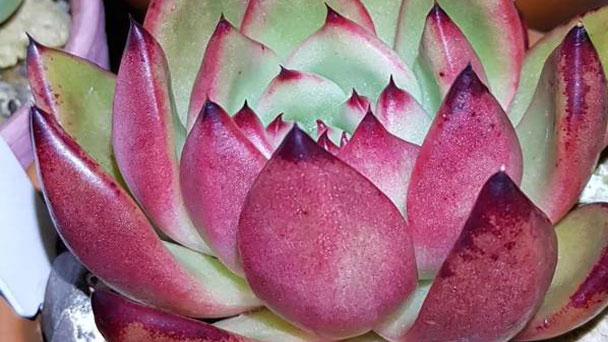
Echeveria Agavoides is a lemon-green rose succulent with triangular leaves and tips painted Burgundy to provide cool contrast. The succulent visuals are not only appealing and fun, but Echeveria Agavoides is very easy to care for, even for beginners. If you don't already own one and just want to pick up one of these succulents for yourself, you can find some here. Beyond that, let me show you how to properly care for Echeveria Agavoides and everything you need to know.
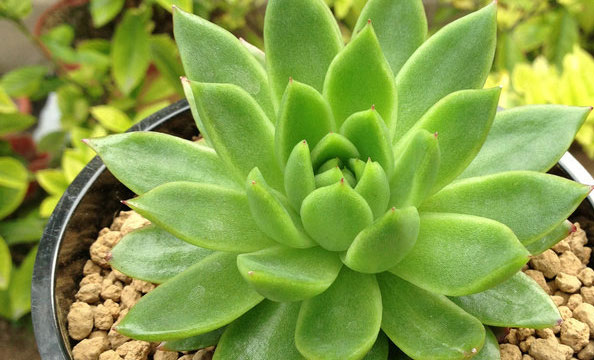
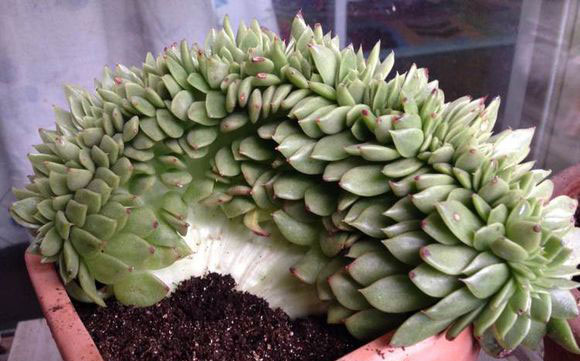
During the spring and summer months, your indoor Echeveria Agavoides succulents need temperatures of between 65 and 80°F (18-27°C). During the winter, a few degrees lower will be ideal. You can grow the plants outside if you have warm summers of at least 19°C or 20°C.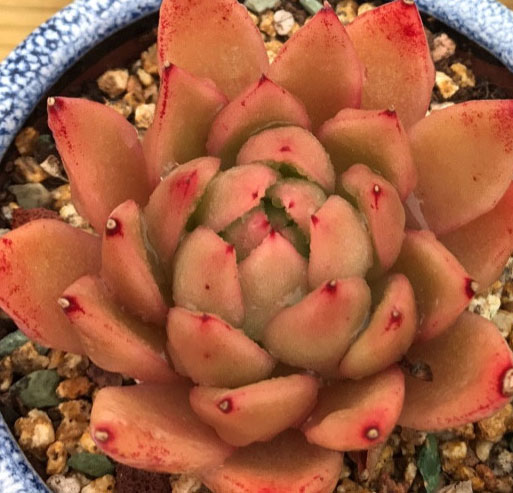
When it is necessary to fertilize your plants, you can use a slow-release fertilizer or a liquid fertilizer diluted to half strength. Liquid fertilizer can be applied by pouring it on the soil, applying it directly to a dry stem before watering, or using a mister.
Slow-release fertilizers are best for Echeveria Agavoides plants that live in clay pots. They will leach more slowly into the potting mix and not bring up too much salt from container soils with high natural sodium content.
These pests can usually be removed by simply washing them off with water or a dilute soap solution, but they may reappear over time.
If the plant becomes infected, it is best to discard both the pest and any egg sacs laid in its soil. This will prevent reinfestation in the coming months.
The Echeveria Agavoides succulent plant also suffers from gray mold, which appears as fuzzy patches on leaves.
For most plants afflicted with this fungus, the problem should clear up naturally if you remove dead foliage at once when symptoms first appear.
However, Echeveria Agavoides plants with weak immune systems or those grown in humid environments are likely to succumb after the first round of infection.
For such Echeveria Agavoides plants, use a fungicide to prevent the spread of further contamination.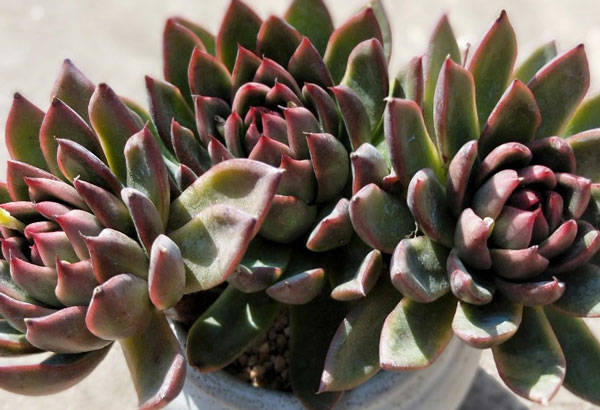
Read Next:
Echeveria Elegans Mexican Snowballs Care & Growing Guide
Echeveria Laui (Echeveria Succulent) Care Guide
Echeveria Pulvinata (Chenille Plant) Care & Propagation Guide
Echeveria Nodulosa (Painted Echeveria) Care Guide
Echeveria Imbricata (Blue Rose Echeveria) Grow & Care Guide
Echeveria Setosa: Grow & Care for Mexican Firecracker
Echeveria Black Prince Succulent Grow & Care Guide
Echeveria Runyonii Topsy Turvy Grow & Care Guide
Echeveria Takasago No Okina Care Guide
Echeveria Mebina Care Guide
Where to Grow Echeveria AgavoidesWhen to Grow Echeveria AgavoidesEcheveria Agavoides PropagationEcheveria Agavoides Propagation with LeavesEcheveria Agavoides Propagation with Stem CuttingsEcheveria Agavoides Propagation with DivisionEcheveria Agavoides Care Echeveria Agavoides Light RequirementsEcheveria Agavoides Soil CareEcheveria Agavoides WateringEcheveria Agavoides Temperature CareEcheveria Agavoides Fertilizer CareEcheveria Agavoides PruningEcheveria Agavoides Pests & Diseases CareEcheveria Agavoides Care FAQIs Echeveria Agavoides cold hardy?Is Echeveria Agavoides pet safe?Does Echeveria Agavoides Produce Flowers?
Where to Grow Echeveria Agavoides
Echeveria Agavoides needs well-draining soil. You can do this in conditions of full sun or even under partial shade. It is better to have Echeveria Agavoides in containers, however, some people may choose to plant it in gardens. Gravel gardens and sunny borders could be the best place to grow Echeveria Agavoides. Growing them in containers makes it easier to transfer them indoors during winters.When to Grow Echeveria Agavoides
The right time to plant the Echeveria Agavoides succulent plant is during the spring and summer seasons. You are supposed to transplant Echeveria Agavoides at this season since it will get sufficient water and warmth necessary for growth. Planting Echeveria Agavoides here may imply the time when you should transplant or propagate. Ensure that the pot is dry before you begin transplanting.
Echeveria Agavoides Propagation
Echeveria Agavoides Propagation with Leaves
Cuttings are probably the most common method of propagating Echeveria Agavoides. It is recommended to start with a healthy leaf. Nevertheless, Echeveria Agavoides leaves can also be removed when shed from Echeveria Agavoides. Use a sharp blade or kitchen blade to cut off the edges of the leaves, making sure there are no large stems at the bottom of each piece. Form a natural seal before potting. Place each Echeveria Agavoides slice into a juicy potted mixture until roots form (usually about two weeks). Once the leaves are planted, carefully remove the new Echeveria Agavoides from the potted mixture and place in a sunny light position. Keep the soil moist, but not wet. If they are too dry, root rot can develop before they can establish their own roots. The best time to harvest chrysanthemum leaves for reproduction is when they are actively growing in summer or autumn. This ensures that more roots will form. In the meantime, there's still plenty of sunlight to grow fast.Echeveria Agavoides Propagation with Stem Cuttings
Echeveria Agavoides stem cuttings are an easy way to propagate and grow this succulent plant. Make an incision at least 4 inches long. Trim the cutting process so that the surface is flat and cut off any leaves on top or below the area. Place the stem cuttings of Echeveria Agavoides in a container containing gravel, a mixture of cactus potting soil (a succulent mixture), or another porous material, such as perlite. Stay wet but not wet for two weeks, then go outside in the warmer months to enjoy plenty of sunshine. When the plant is 12 inches tall, put it in a container. Use water as needed to keep the soil moist.Echeveria Agavoides Propagation with Division
Division is the most common reproductive mode of Echeveria Agavoides. Produces a small offset at the base of the rosette. Offsets can be extracted from the parent plant and then potted in a well-drained soil mixture. Echeveria Agavoides produced more offsetting if they were grown in brighter light for a few hours a day or for a longer period (14 weeks). When the offset reaches about 3 inches high, it should be transplanted.
Echeveria Agavoides Care
Echeveria Agavoides Light Requirements
Echeveria Agavoides prefers exposure to full or partial sunlight similar to other succulents of the echeveria variety. If you plan to plant Echeveria Agavoides in the garden, place it in a location that gets 6 hours of morning sunlight. It is very helpful to receive exposure to full sun. It will bring out the most vibrant and brightest colors of Echeveria Agavoides. If grown indoors, position Echeveria Agavoides in a window that faces the south or west so that it will get the most sunlight.Echeveria Agavoides Soil Care
Choose soil for Echeveria Agavoides, you should use a mix of high quality juicy and cactus soil to provide great drainage as it is super important juicy. If you want to drain, injecting some mineral gravel is also a good idea.If you want the best drainage system, you can use pearl sand or coarse sand, or even both. By using high quality soil and mineral grit you will have no problem providing the right environment for your Lipstick succulent to grow. Don't forget to use a drainage hole if you plan on growing echeveria Agavoides in a container.Echeveria Agavoides Watering
Watering Echeveria Agavoides is actually simple because there are only a few factors affecting how often you water.One of these factors is the general weather conditions in your area. For example, if you live in a hot or dry place, then you will be more frequent than your water in cold or wet places.This has to do with the fast or slow soil in your area because it is really the most important thing to keep in mind. The same will go for the different seasons of the year as summer will dry soil much faster than the winter will. So in general you can expect to water Echeveria Agavoides on a weekly basis in the summer or in a very hot location and up to a monthly basis in the winter or very cold areas. It just depends on how fast the soil dries in your area. So just water once and only water again when the soil is fully dry and your succulent will be good to go. This prevents you from over watering your succulent and also prevents root rot from happening.Echeveria Agavoides Temperature Care
At the USDA, Echeveria Agavoides survived in winter 10 and higher and produced large cover plants for rock gardens.However, if staying outside, the Echeveria Agavoides will require a mild full-year climate. Echeveria Agavoides is very sensitive to cold and temperature drops drops and it will be unbearable.But if you live in a relatively warm winter area, you can still enjoy these beautiful succulent plants, grow them in indoor pots, or move them indoors for the cold winters.Like many water-absorbing plants, the biggest problem with growing Echeveria Agavoides is that they don't get as much sunlight as they do outdoors.During the spring and summer months, your indoor Echeveria Agavoides succulents need temperatures of between 65 and 80°F (18-27°C). During the winter, a few degrees lower will be ideal. You can grow the plants outside if you have warm summers of at least 19°C or 20°C.

Echeveria Agavoides Fertilizer Care
The Echeveria Agavoides does not need to undergo regular fertilization.If you find that juicy begins to wither or yellow, it may be time to fertilize. If Echeveria Agavoides, even after a few months, show no signs of withering or death, then they don't need any fertilizer at all, and rain alone has enough nutrition.When it is necessary to fertilize your plants, you can use a slow-release fertilizer or a liquid fertilizer diluted to half strength. Liquid fertilizer can be applied by pouring it on the soil, applying it directly to a dry stem before watering, or using a mister.
Slow-release fertilizers are best for Echeveria Agavoides plants that live in clay pots. They will leach more slowly into the potting mix and not bring up too much salt from container soils with high natural sodium content.
Echeveria Agavoides Pruning
Little trimming is required except in the old Echeveria Agavoides. When height is excessive, can be trimmed, the top can be cut off, side branches, and eventually form a complete Echeveria Agavoides plant. Remove withered flowers (dehydrated) regularly.
Echeveria Agavoides Pests & Diseases Care
Echeveria agavoides succulent plants are susceptible to scale and mealybugs.These pests can usually be removed by simply washing them off with water or a dilute soap solution, but they may reappear over time.
If the plant becomes infected, it is best to discard both the pest and any egg sacs laid in its soil. This will prevent reinfestation in the coming months.
The Echeveria Agavoides succulent plant also suffers from gray mold, which appears as fuzzy patches on leaves.
For most plants afflicted with this fungus, the problem should clear up naturally if you remove dead foliage at once when symptoms first appear.
However, Echeveria Agavoides plants with weak immune systems or those grown in humid environments are likely to succumb after the first round of infection.
For such Echeveria Agavoides plants, use a fungicide to prevent the spread of further contamination.

Echeveria Agavoides Care FAQ
Is Echeveria Agavoides cold hardy?
Echeveria Agavoides is actually not very cold hardy as it can only really tolerate temperatures above 20 degrees Fahrenheit. This means that if the temperature gets lower than this in your area then your succulent will not survive for long. So if you plan on it becoming this cold in your area then go ahead and start growing this succulent indoors if you're not already doing so. If you don't feel like doing that then you can always use a high quality mini greenhouse for succulents if you want to keep growing outdoors no matter how cold it is.Is Echeveria Agavoides pet safe?
Echeveria Agavoides is considered to be completely pet safe for common pets like cats and dogs.Does Echeveria Agavoides Produce Flowers?
Yes, Echeveria Agavoides blooms red flowers with yellow-colored tips in the spring and early summer.Read Next:
Echeveria Elegans Mexican Snowballs Care & Growing Guide
Echeveria Laui (Echeveria Succulent) Care Guide
Echeveria Pulvinata (Chenille Plant) Care & Propagation Guide
Echeveria Nodulosa (Painted Echeveria) Care Guide
Echeveria Imbricata (Blue Rose Echeveria) Grow & Care Guide
Echeveria Setosa: Grow & Care for Mexican Firecracker
Echeveria Black Prince Succulent Grow & Care Guide
Echeveria Runyonii Topsy Turvy Grow & Care Guide
Echeveria Takasago No Okina Care Guide
Echeveria Mebina Care Guide
Latest Updated
- Benefits of Bugleweed - 7 Science-backed Health Benefits
- Bugleweed Dangers & Side Effects - Is It Poisonous?
- How to Plant Evergreen Trees - What You Should Know
- When to Plant Evergreens - Grow Guide for Evergreen Trees
- 12 Wonderful Evergreen Shrubs for Your Garden
- 12 Popular Evergreen Plants with Pictures for Beginners
- When And How To Prune A Lilac Bush Like a Pro
- How to Grow & Care for Lilac Vine (Hardenbergia Violacea)
- Japanese Lilac Tree (Syringa Reticulata) Care & Propagation Guide
- Shumard Oak Pros and Cons - What to Know
Popular Articles
- Winter maintenance of Antirrhinum Majus
- How to Grow Terminalia Mantaly Tree
- How to Grow and Care for Crossostephium Chinense
- How to grow Antirrhinum Majus in spring
- Peristeria Elata (Dove Orchid) Profile: Info & Care Guide
- Underwatered Snake Plant (Sansevieria Trifasciata) - Signs And How To Fix
- How to Care for Brazilian Jasmine Plant (Mandevilla Sanderi)
- How to Grow & Care for Graptopetalum Purple Delight in Summer
- Rosa Chinensis (China Rose): Plant Growing & Care Tips
- How to Care for Baby Sun Rose (Aptenia Cordifolia)